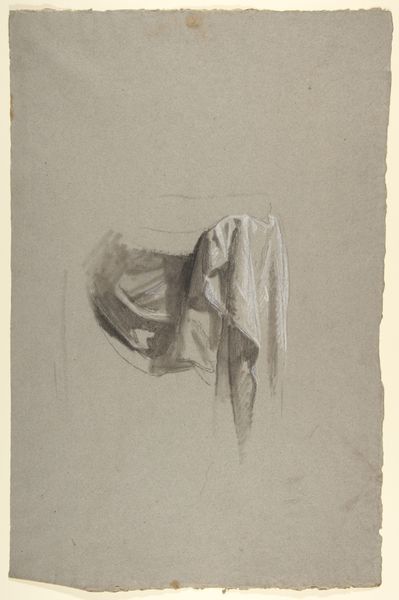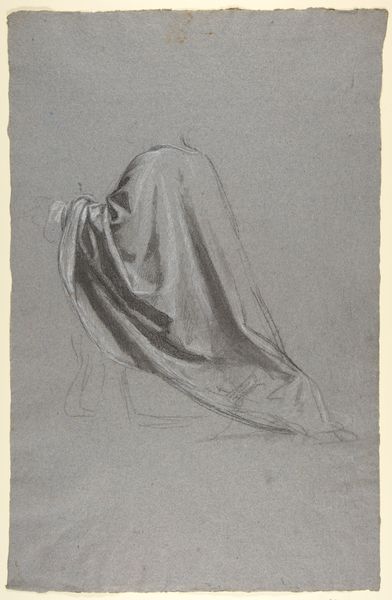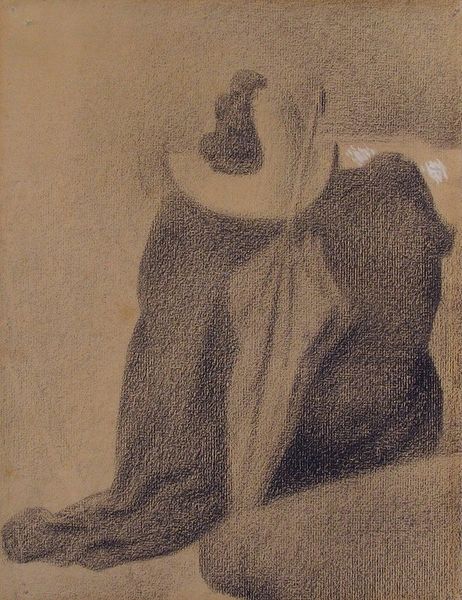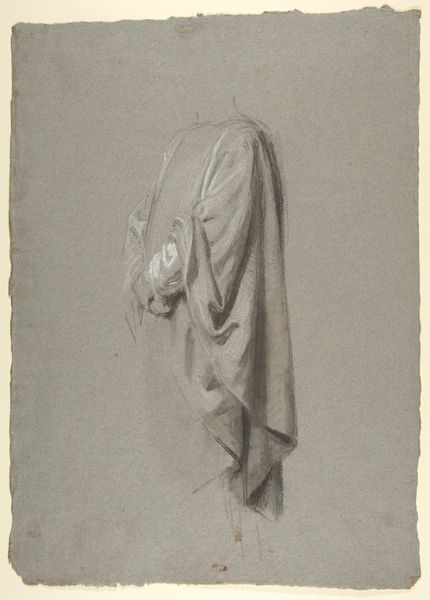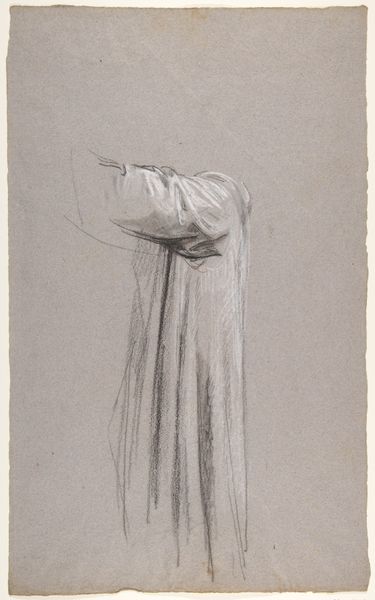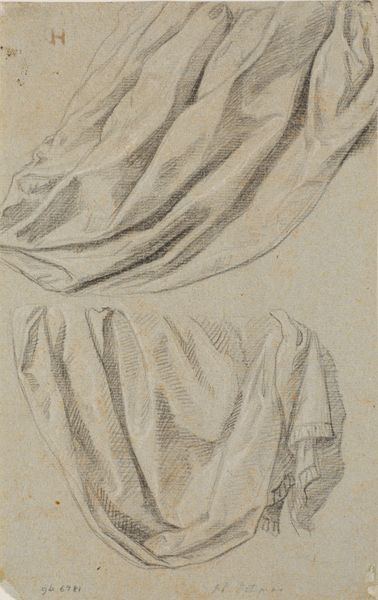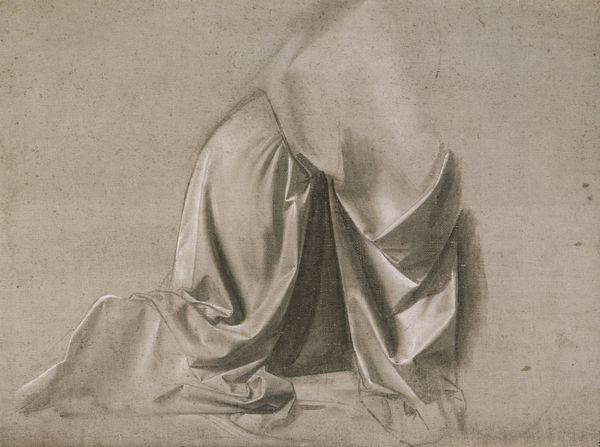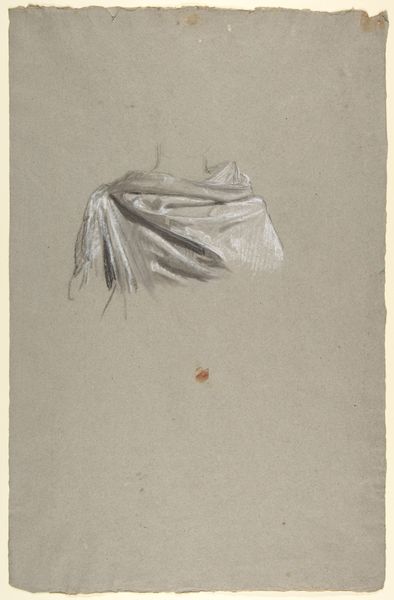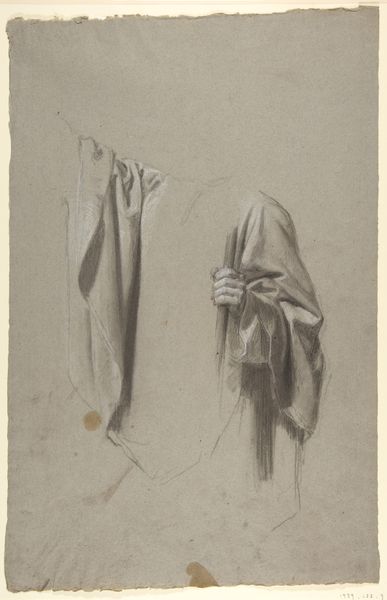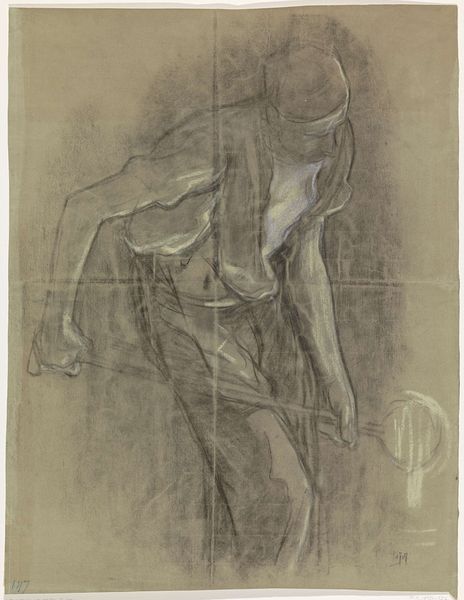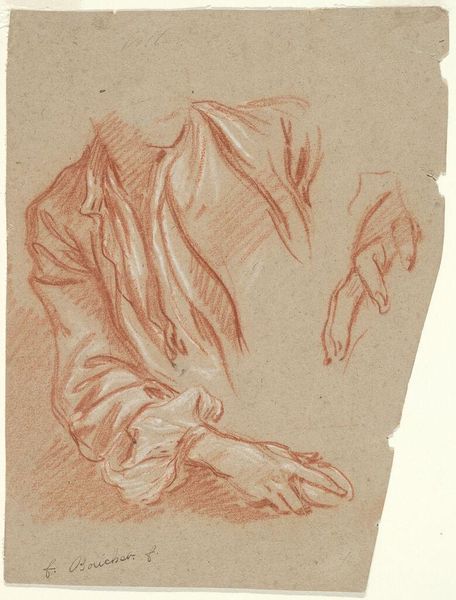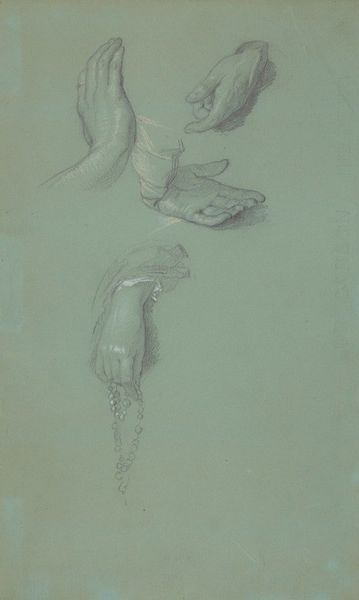
a. Hand of Saint Remi; b. Hand of Saint Remi; c. Drapery Study for Acolyte Holding Book c. 19th century
0:00
0:00
drawing, dry-media, graphite, charcoal
#
drawing
#
dry-media
#
graphite
#
charcoal
#
history-painting
#
academic-art
Copyright: Public Domain: Artvee
Curator: Allow me to introduce "a. Hand of Saint Remi; b. Hand of Saint Remi; c. Drapery Study for Acolyte Holding Book," a set of 19th-century drawings by Isidore Pils. These studies are rendered in graphite and charcoal. Editor: Well, looking at these studies, I'm immediately drawn to the… detachment, I suppose. These aren't fully formed beings, but fragments, glimpses. And yet, there’s something deeply human and very tactile about the rendering, especially of the fabric. It makes me want to reach out and touch it, even though it’s just graphite on paper! Curator: These studies offer valuable insight into Pils’ academic approach. As components for larger historical paintings, the individual drawings exemplify the era’s dedication to realistic anatomical detail and textile representation. In the top left the use of red chalk adds vibrancy. The detached limbs, considered within the larger structure of Academic Art and its social role, prompt me to ask: who were the bodies, often marginalized, that constituted these idealized historical narratives? Editor: I see what you mean, a sort of deconstruction already implicit in the way Pils has chosen to represent them. Like he's asking us to consider the very building blocks of those grand historical paintings you mentioned. Still, to me, there's a raw energy in the lines, like he’s trying to capture something fleeting. Curator: And isn’t that the heart of the tension in academic art? That delicate balance between capturing life, even fleeting moments, while upholding prescribed forms and ideologies? Academic art schools, predominantly male and white, frequently used the human body, of mostly unnamed subjects, to communicate religious or secular power. Editor: I agree, thinking of who got to create "History," in big and small ways, brings new layers of significance here. For me, I’m left considering that even studies, these seemingly minor pieces, offer potent artistic experiences. Curator: Indeed. Pils' work urges us to consider not only artistic skill but the social and historical forces at play in art production, consumption, and their continuing effect. Editor: Absolutely. And on a purely sensory level? A reminder that art, no matter how academic, can be, at its best, truly and utterly transportive.
Comments
No comments
Be the first to comment and join the conversation on the ultimate creative platform.
